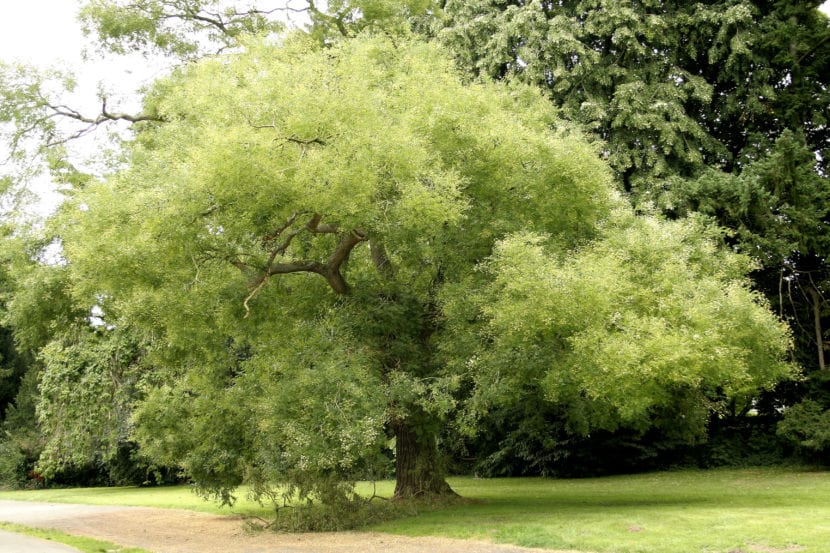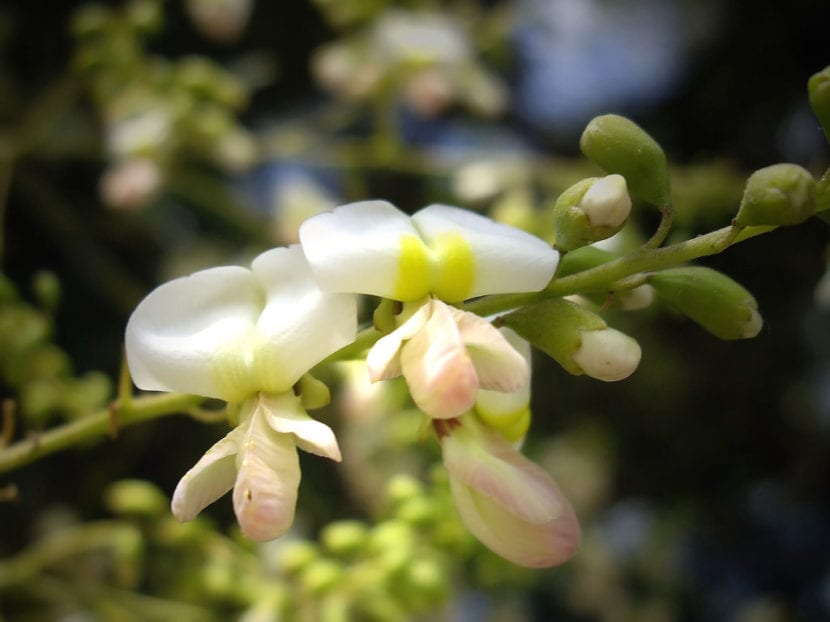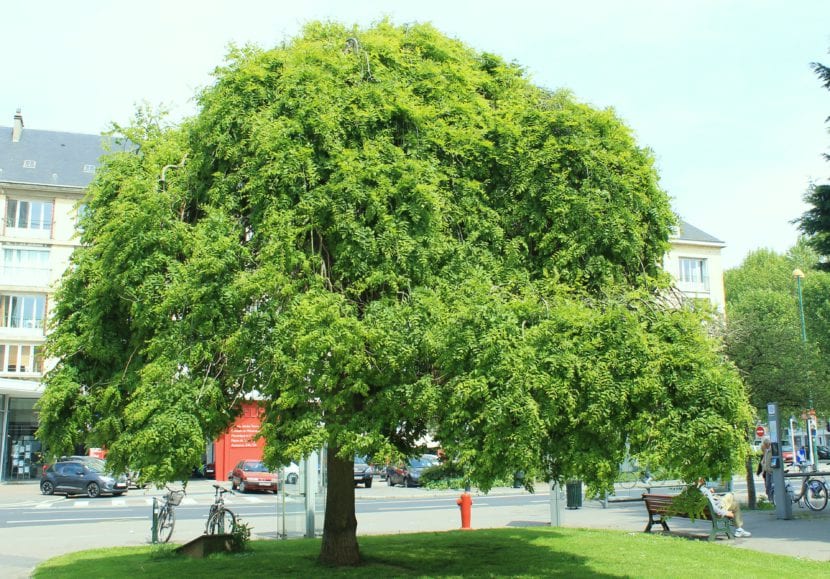
No, it is not an Acacia, although it looks like it. Its scientific name is Sophora japonicaAnd no, the title is not bad: this species comes from China, although it is true that it is widely cultivated in Japan. So, we have a tree that is not what it seems, and that has a surname that does not tell anything about its place of origin. What kind of plant is this?
One of the most interesting to have in the gardens, believe me 😉. It grows at a slow pace, has very pretty flowers, and grows to a height of 15-20 meters, with a crown of up to 5m. So if you are looking for an ornamental tree that gives good shade, this is yours. Learn more.
Characteristics of Sophora japonica

La Sophora japonica, known by the names of Pagoda tree or, simply, Sófora, is a deciduous tree that belongs to the botanical family Leguminosae. It has compound, odd-pinnate leaves, with 3-8 pairs of leaflets up to 7cm long. The flowers appear grouped in clusters, which sprout during the summer. As a curiosity, it must be said they are hermaphrodites, that is, the female and male sexual organs are in the same flower. The fruit is a legume up to 9cm long. There are four varieties:
- Dot: small tree that has pendulous and tortuous branches.
- Regent: it has large, dark green leaves. It is the one that best supports insolation, and also grows somewhat faster.
- Pendulum: It has hanging branches, and its flowering is not so showy. It grows to a height of 7 meters, with a diameter of 5m. It is a grafted variety.
- columnaris: it has a columnar bearing.
How do you take care of yourself?

This is a tree that withstands frosts down to -25ºC, resists pollution and salinity, and grows in all types of soils. However, for it to grow in conditions it is necessary to take into account the following:
- Location: full sun.
- Irrigation: biweekly. It can withstand drought once established.
- Subscriber: from spring to summer, it is highly recommended to fertilize with liquid organic fertilizers.
- Pruning: not advised. The wood is brittle and with pruning it also causes the sprouting of emergency growth branches, which wear down the tree a lot, to the point that its life expectancy is shortened.
- Plagues and diseases: on the one hand, mealybugs and aphids can affect you if the environment is dry and hot; on the other, the fungi can infect you if the environment is very humid and / or if you have pruning wounds. To avoid this, it is highly advisable to treat it during the hot months with Neem Oil to repel / combat insects, and with natural fungicides sold in nurseries.
- Reproduction: it reproduces by seeds in spring, introducing them in a strainer and then 1 second in boiling water, and 24 hours in water at room temperature. The next day they are sown in pots with universal culture substrate mixed with 30% perlite.
What did you think of Sophora japonica?